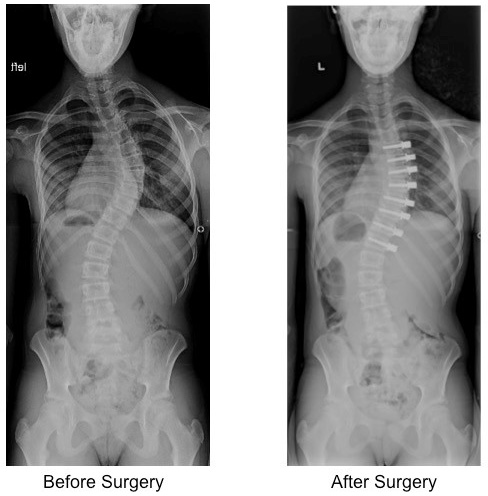Recent advancements in surgical techniques, coupled with our improved understanding of scoliosis in growing children, have paved the way for the development of minimally invasive fusionless surgery for adolescent idiopathic scoliosis, technically known as vertebral tethering. Instead of rigidly fusing the spine following straightening, a taut rope is placed on the convex side of the spinal curve. This innovative approach uses minimally invasive surgery to make small incisions through which a camera is introduced to observe the spine. Over time, as the child’s spine continues to grow, the tethered convex side is restrained from growing, while the concave side is allowed to grow, gradually resulting in the straightening of the spine without the necessity for fusion.
It’s important to note that this procedure is currently experimental and has not received approval from the Food and Drug Administration (FDA). Moreover, it can only be safely performed on specific children who are still in the active growth phase. For guidance on whether this procedure is suitable for your child, please consult with Dr. Cho.
Case Presentation
This 12-year-old actively growing teenager presented with progressive adolescent idiopathic scoliosis. She underwent minimally invasive fusionless surgery or vertebral tethering to gradually correct the scoliosis as her spine grows. She returned to the office 2 weeks later, pain-free and without any loss of motion.

